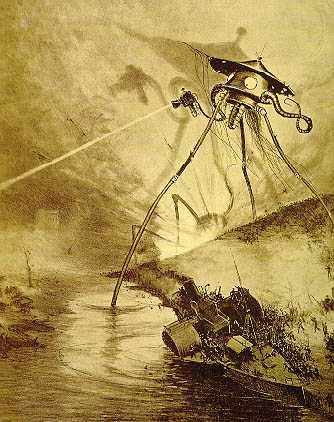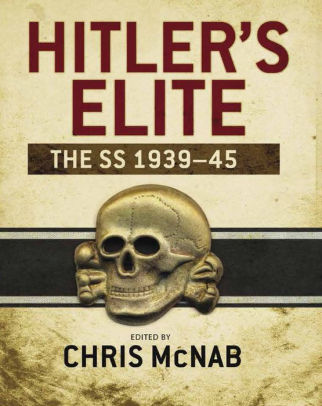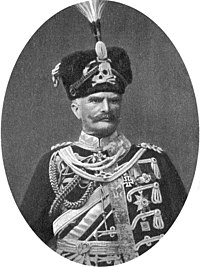Another Duchess:
Not as smart as the one I faced.
In the spring of 1982 I was finishing my second year in graduate school at the University of North Carolina. I already had a bachelor's degree in History from the same institution, and at the time my plan was to become a high school teacher. During the spring semester, I became involved with the science fiction club at UNC, called "Chimera," and through some of the computer guys in the club I had an opportunity to play chess against a famous chess program of the era, "Duchess."
[edited from chessprogramming.org]:
An IBM 370/168.
Duchess lived somewhere inside of one of these.
In 1982 the three major universities in central North Carolina, (Duke University in Durham, North Carolina State in Raleigh, and UNC in Chapel Hill) were partners in a joint computing venture known as TUCC, the Triangle Universities Computation Center:
The Triangle Universities Computation Center (TUCC) was incorporated in 1965 as a cooperative venture between Duke University, North Carolina State University and the University of North Carolina at Chapel Hill, with the goal of providing main-frame computing services, such as electronic data and batch processing, to the universities, RTI International and others. It dissolved in 1990 due to financial difficulties, the increased use of personal computers, and disagreements among the partners. Materials in the collection include administrative records, correspondence, meeting minutes, financial and statistical reports, memoranda, proposals, newsletters, photographs, slides, a scrapbook, and other materials from the Triangle Universities Computation Center.
Because of this system, it was possible to connect via a teleprinter in Chapel Hill to mainframes at the participating schools. I had read about Duchess in a book by David Levy describing the development and as-yet early history of computer chess. When I learned I could access the program and play Duchess, I leaped at the chance.
A teleprinter. Text was banged out on
the paper roll by a chattering typing
element, kind of like on old IBM
Selectric typewriters.
Photo by Arnold Reinhold
In those days dorms at UNC had "computer rooms," usually some out of the way closet no one else had a use for. I lived in the graduate students' dorm, Craige. The computer room was in the basement. There were, as I recall, two teleprinters--no CRT screens in those days--and they were available on a first-come, first serve basis. As I didn't want to impede anyone's legit use of the system, I tended to play late at night, usually on Thursdays or Fridays. I had to bring my own chess set, as the program accepted and replied in chess notation. My memory is hazy on one detail; I don't remember if Duchess used descriptive notation or algebraic. Most likely the latter, as descriptive was on its way out.
This, children, is a dial-up modem.
It's what we used to use to
access other computers . . . the
brown thing is a telephone.
Connection was made by dial-up modem. Once connected, I had to sign in with my user's account name. For some reason, user accounts at that time and place all began with the letter "U," which predictably led to user names like UDEVIL, UDOG, or UKIDDO. My handle at that time was UNATUX (the meaning of which is another story entirely).
[Charles Andrews, one of the aforementioned computer guys, says this:
"Usernames were prefixed with the TUCC university that owned the underlying account:
D = Duke
N = NCSU
U = UNC
E = Educational computation service (everyone else.)"
I imagine users at State might have names like NSANE, NFANT, or NFAMOUS. Dukies could be DLITE, DFEAT, DNY . . . ]
[Charles Andrews, one of the aforementioned computer guys, says this:
"Usernames were prefixed with the TUCC university that owned the underlying account:
D = Duke
N = NCSU
U = UNC
E = Educational computation service (everyone else.)"
I imagine users at State might have names like NSANE, NFANT, or NFAMOUS. Dukies could be DLITE, DFEAT, DNY . . . ]
After settling who would play Black or White, the game began. A fair amount of time passed sitting, staring at the teleprinter and waiting for it to spit out a move. I would respond, making the moves on my chess board for my own reference. Early moves went fairly briskly, as Duchess's opening book was well programmed. I quickly learned that the faster the program responded, the more trouble I was in. When it slowed down, taking longer to reply, that meant it was searching deeper in its repertoire for the best move.
In the last few weeks of the 1982 Spring semester I played about 25 games against Duchess. Of all those, I won just one, and drew one.
Playing via teleprinter in the empty, often cold basement room lent the whole experience a weird, detached air, almost like a seance. I would input a move, wait, and at some point my unseen, mysterious opponent would respond. I didn't save transcripts of my games. With a 92% loss rate, there wasn't any reason to save most of them, though now I wish I'd saved my lone win and solitary draw.
Just for reference, here's a record of Duchess's game in 1979 against another well known computer program, CHAOS:
White: Duchess
Black: CHAOS
1.e4 c5 2.Nc3 Nc6 3.g3 e6 4.Nf3 d5 5.exd5 exd5 6.d4 Bg4 7.Be2 Nf6 8.Bg5 Bxf3 9.Bxf3 Qe7+ 10.Kf1 cxd4 11.Nxd5 Qd8 12.Qe2+ Kd7 13.Qb5 Rb8 14.Nxf6+ gxf6 15.Qf5+ Kc7 16.Bxf6 Be7 17.Bxh8 Qxh8 18.Qxf7 Qg8 19.Qxg8 Rxg8 20.Be4 Rh8 21.f4 Na5 22.Ke2 Nc4 23.Rhb1 Bf6 24.Kd3 Nb6 25.Re1 Kb8 26.Rab1 Na4 27.Bf5 h5 28.Bg6 Nc5+ 29.Kc4 Nd7 30.Re8+ Rxe8 31.Bxe8 Nb6+ 32.Kc5 h4 33.gxh4 Kc8 34.h5 Kd8 35.Bb5 Kc7 36.h6 a6 37.Bd3 Bh8 38.Bf5 Na4+ 39.Kb4 b5 40.Ka5 Kb7 41.Be4+ Ka7 42.h7 Nb6 43.h4 Nc4+ 44.Kb4 Kb6 45.c3 a5+ 46.Kb3 dxc3 47.Rd1 Nd2+ 48.Rxd2 cxd2 49.Kc2 b4 50.h5 Kc5 51.Kxd2 Bxb2 52.h6 Bh8 53.Ke3 Kc4 54.Bc2 Kd5 55.Bb3+ Kc5 56.Ke4 Kd6 57.Kf5 Kd7 58.Kg6 Ke7 59.f5 Be5 60.Bc2 Bf6 61.Be4 Bh8 62.Bf3 Be5 63.Bc6 Bf6 64.Be8 Be5 65.Bb5 Bh8 66.Bc4 a4 67.Bg8 Bf6 68.Bd5 Be5 69.Kg5 Bf6+ 70.Kf4 Kf8 71.Ke4 Ke7 72.Be6 a3 73.Kd3 Bh8 74.Kc4 Bc3 75.Kc5 Kd8 76.Kd6 Ke8 77.Bb3 Bb2 78.Ke6 Bh8 79.Ba4+ Kf8 80.Bd1 Ke8 81.f6 Kf8 82.Bb3 Ke8 83.Ba4+ Kf8 84.Bd1 Ke8 85.Bb3 Kf8 86.Bc4 Ke8 87.Bb5+ Kf8 88.Ba4 b3 89.Bxb3 Ke8 90.Bc2 Kf8 91.Bd3 Ke8 92.Bb5+ Kf8 93.Ba6 Ke8 94.Bd3 Kf8 95.Be2 Ke8 96.Bh5+ Kf8 97.Bg4 Ke8 98.Bf3 Kf8 99.Be4 Ke8 100.Bg6+ Kf8 101.Bf5 Ke8 102.Be4 Kf8 103.Bb1 Ke8 104.Bf5 Kf8 105.Bc2 Ke8 106.Ba4+ Kf8 107.Bd1 Ke8 108.Be2 Kf8 109.Bf3 Ke8 110.Bc6+ Kf8 111.Bd5 1-0
111 moves is quite a long game. None of mine ever went past 50 moves or so.
I've had a mixed relationship with chess most of my life. I was never more than a mediocre player, though when I was eighteen I cherished dreams of greatness. It never happened. All through my freshman year in college I labored to play competitively, but I didn't have the chops. I was quite put off by my fellow players too. It's a terrible stereotype, but I assure you the players I encountered back then were some of the most awkward, Aspergerish guys (yes, they were all male) I ever met. I didn't want to become like them, so I sold my chess books, spare sets, clock, and became a science fiction fan instead . . .
My fascination with chess has lingered. I've followed the major stories over the decades--Bobby Fischer's decline and fall, Kasparov vs Karpov, the debut of Deep Blue, and most recently, the advent of AlphaZero. I've mined my experiences playing Duchess and others for my new novel FIANCHETTO. I hope they lend some verisimilitude to the story.
Funny thing though; while Duchess was a powerful program in its day, it doesn't hold a candle to common chess engines now available on PCs and the net. I like to think of the old girl like a classic sports car, no longer the fastest or most powerful thing on the road, but an elegant example of the genius of its time.
This is just an excuse to put in a
picture of an MG Midget. I used to own
own one, a cream-colored 1971 model.
Sic transit gloria curru.
























